Categories
Restaurant Guides, Food & Drink, Local Culture, Local Business, Local Guides, Food & Travel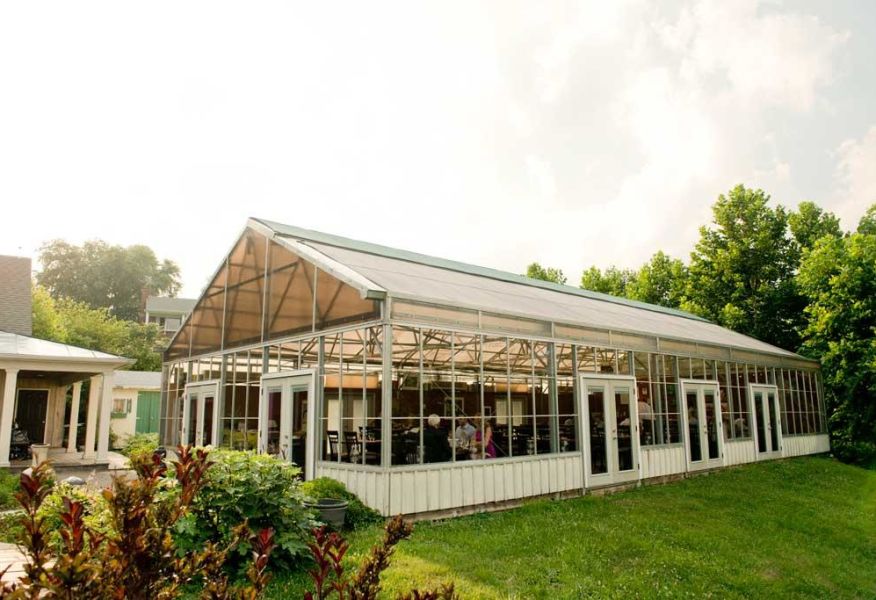
The Potomac River glints silver in the rearview mirror as you leave D.C.'s urban sprawl behind, trading concrete canyons for the gentle undulations of Northern Virginia's countryside. Here, where horse farms give way to tech corridors and historic estates neighbor modern shopping plazas, a culinary revolution has been quietly brewing. This isn't the Virginia of roadside diners and chain restaurants—this is a region where James Beard Award winners craft menus in converted mills, where Michelin-starred techniques meet local terroir, and where a single meal can transport you from the hills of Provence to the bustling streets of Belgrade.
The drive itself becomes part of the experience. Roll down the windows on Route 50 as you pass through Middleburg's fox-hunting country, or take the scenic route along the Potomac where Great Falls thunders in the distance. Each restaurant in this culinary constellation offers more than just a meal—they provide a portal into the sophisticated, multicultural tapestry that defines modern Northern Virginia.
The Restaurant at Patowmack Farm

Nestled on 75 acres of rolling farmland in Lovettsville, The Restaurant at Patowmack Farm represents farm-to-table dining at its most authentic. Chef Tarver King didn't just embrace the local food movement—he literally built his restaurant around it, cultivating relationships with neighboring farms and maintaining an on-site garden that supplies 70% of the restaurant's produce.
The converted 1880s farmhouse exudes rustic elegance, with exposed beams, stone fireplaces, and windows that frame pastoral views of grazing cattle and heritage vegetables. King's philosophy centers on what he calls "radical seasonality"—menus that change not just seasonally but sometimes daily, based on what's literally growing outside the kitchen door.
"We're not just cooking with the seasons," King explains while inspecting a patch of purple-top turnips, "we're cooking with the weather, the soil, the particular moment when a vegetable reaches its peak expression." This dedication manifests in dishes like the restaurant's signature roasted beets with goat cheese mousse and walnut oil, where each component can be traced to its origin within a ten-mile radius.
The tasting menu format encourages diners to surrender control, trusting King's vision as courses arrive like edible love letters to the Virginia countryside. It's dining as meditation, where the rhythm of the meal mirrors the agricultural cycles that sustain it.
2941 Restaurant
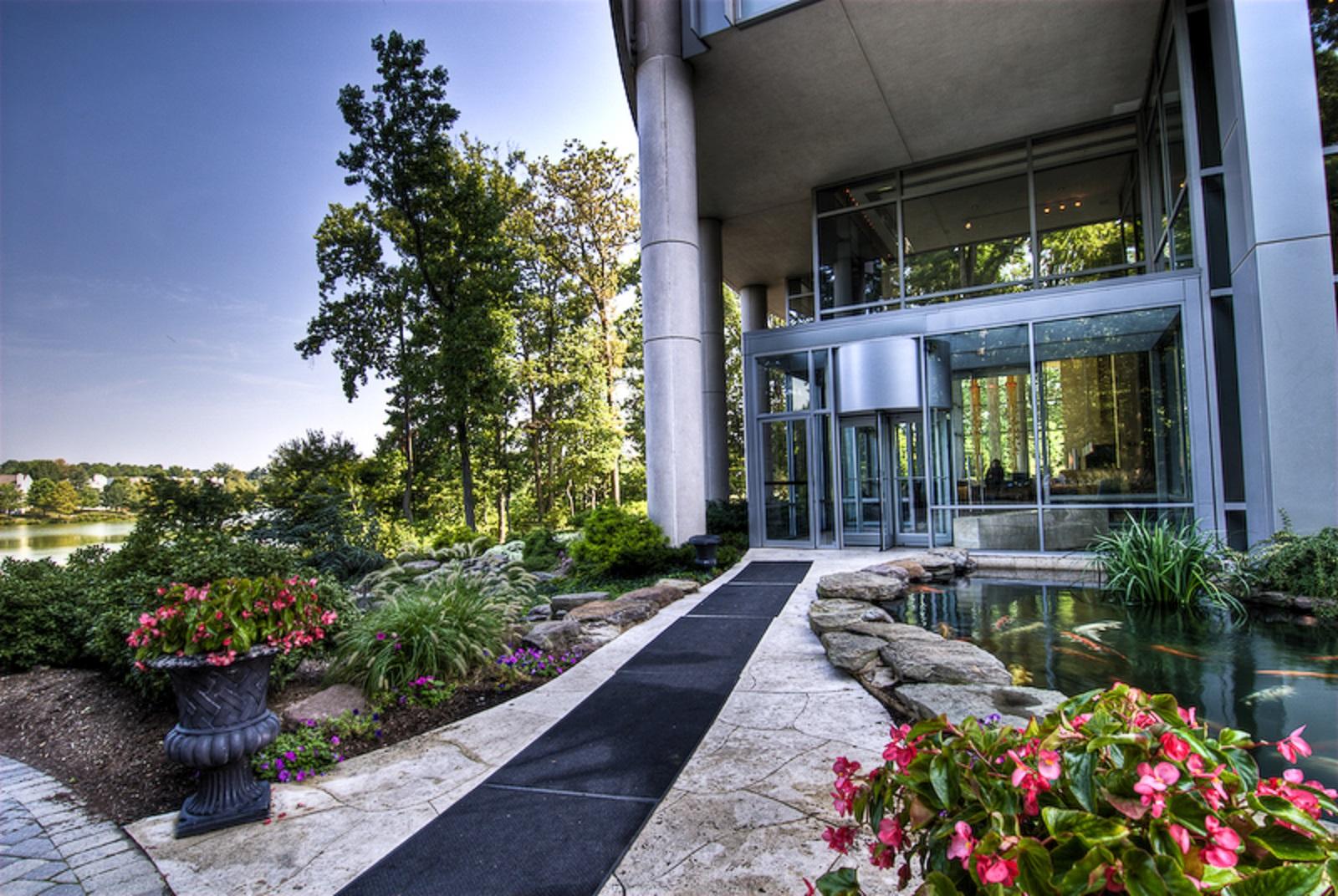
Perched on a hillside overlooking the Potomac in Falls Church, 2941 Restaurant occupies a stunning contemporary space that seems to float above the water. The restaurant's dramatic floor-to-ceiling windows and sleek interior design create an atmosphere of modern sophistication, while the seasonal menu reflects executive chef Bertrand Chemel's French training filtered through American sensibilities.
Chemel's approach balances technical precision with approachable elegance. His signature dish, the duck breast with cherry gastrique and sweet potato purée, exemplifies this philosophy—classical French technique applied to ingredients that speak to both sophistication and comfort. The restaurant's wine program, overseen by sommelier Jennifer Knowles, features an impressive selection of both Old World classics and emerging American vintages.
"Fine dining doesn't have to be intimidating," Chemel notes, observing servers who explain each course with genuine enthusiasm rather than pretentious theater. "We want guests to feel elevated, not excluded." This philosophy extends to the restaurant's service style, where formality never eclipses warmth.
The restaurant's location makes it particularly popular for special occasions—the sunset views over the Potomac provide a cinematic backdrop for anniversary dinners and business celebrations. Yet the kitchen's consistency and creativity have earned it a devoted following among serious food lovers who appreciate Chemel's commitment to seasonal American cuisine executed with French precision.
L'Auberge Chez François
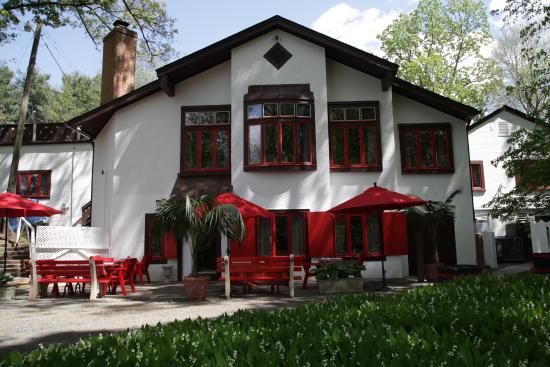
Some restaurants are institutions; L'Auberge Chez François is practically a pilgrimage site. For nearly six decades, this Alsatian country inn in Great Falls has transported diners to the French countryside without requiring a passport. The restaurant's fairy-tale setting—a chalet-style building surrounded by gardens and terraces—creates an atmosphere of European romance that feels both timeless and magical.
The Haeberlin family has maintained the restaurant's authentic French character while adapting to changing tastes. The menu still features classics like coq au vin and bouillabaisse, but chef Jacques Haeberlin has subtly modernized preparations and presentations. The restaurant's famous cheese cart, wheeled tableside by servers who could double as college professors of French dairy, remains a theatrical highlight that never fails to enchant first-time visitors.
"My grandfather always said that a restaurant is not just about food—it's about creating memories," reflects current owner François Haeberlin. "Every detail, from the hand-painted murals to the way we light the candles, contributes to that experience." This attention to atmosphere extends to the restaurant's seasonal outdoor dining areas, where diners can enjoy their meals surrounded by blooming gardens and the gentle sounds of hidden fountains.
The restaurant's longevity speaks to its ability to evolve while maintaining its essential character. In an era of constant culinary innovation, L'Auberge Chez François offers something increasingly rare: the comfort of tradition executed with unwavering excellence.
Bistro L'Hermitage
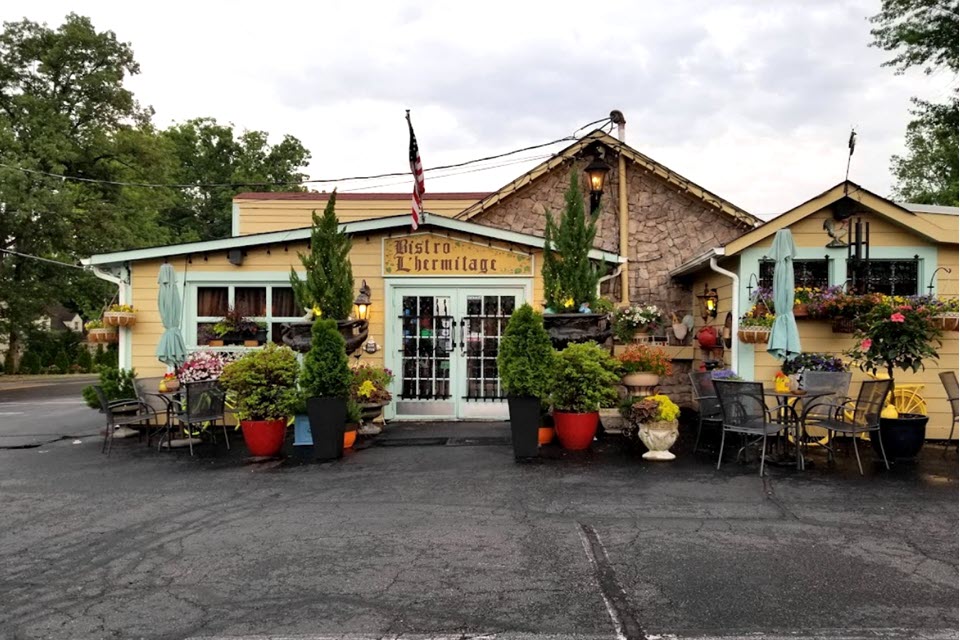
In the heart of Woodbridge, Bistro L'Hermitage occupies an unexpected niche—a neighborhood bistro that happens to serve some of the region's most accomplished French cuisine. Chef-owner Yves Olivia brings decades of experience from France's Loire Valley to this intimate 40-seat restaurant, where the atmosphere feels more like dining in a sophisticated friend's home than a commercial establishment.
The restaurant's modest exterior belies the sophistication within. Olivia's menu changes seasonally but always features his signature rabbit confit with mustard sauce and garlic-herb potatoes—a dish that has earned devotees from across the region. His approach to French cuisine emphasizes technique and quality ingredients over flashy presentation.
"In France, we say that good food speaks for itself," Olivia explains while preparing his famous onion soup, a deceptively simple dish that requires hours of careful preparation. "I don't need to reinvent the wheel—I just need to make sure my wheel is perfectly round." This philosophy extends to the restaurant's wine list, which features carefully selected bottles from small French producers alongside a few American options.
The bistro's intimate scale allows for genuine hospitality—Olivia often emerges from the kitchen to greet regulars and explain dishes to newcomers. This personal touch, combined with consistently excellent food, has created a loyal following among locals who appreciate having access to authentic French cuisine without the pretension or price point of larger establishments.
Clarity
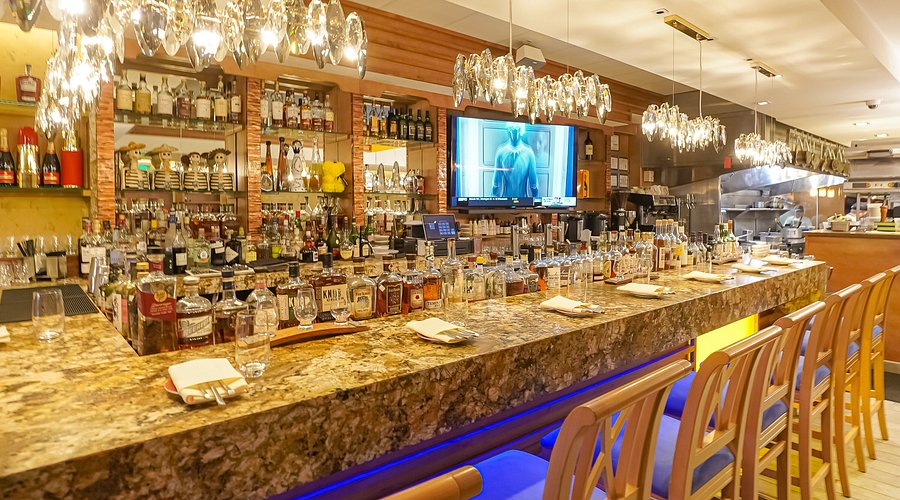
In the rapidly evolving Mosaic District, Clarity represents a new generation of Virginia restaurants that draws inspiration from global flavors while maintaining strong local connections. Chef John Critchley's background includes stints at acclaimed restaurants in New York and London, but his menu at Clarity reflects a distinctly contemporary American approach to fine dining.
The restaurant's sleek, minimalist interior provides a neutral backdrop for Critchley's colorful, artistic presentations. His signature dish, the octopus with romesco sauce and pickled vegetables, showcases his ability to combine Mediterranean techniques with local ingredients. The menu changes frequently, but always reflects Critchley's commitment to what he calls "conscious cuisine"—dishes that consider environmental impact alongside flavor.
"We're not trying to be the loudest voice in the room," Critchley explains while plating his delicate crudo of local rockfish. "We want to create food that makes people think, that connects them to the ingredients and the process." This philosophy extends to the restaurant's beverage program, which features natural wines and craft cocktails made with house-made syrups and locally foraged ingredients.
Clarity's location in the Mosaic District makes it popular with the area's young professionals and international residents, who appreciate the restaurant's global perspective and commitment to sustainability. The restaurant's success reflects Northern Virginia's growing sophistication and its embrace of diverse culinary influences.
Ambar Clarendon
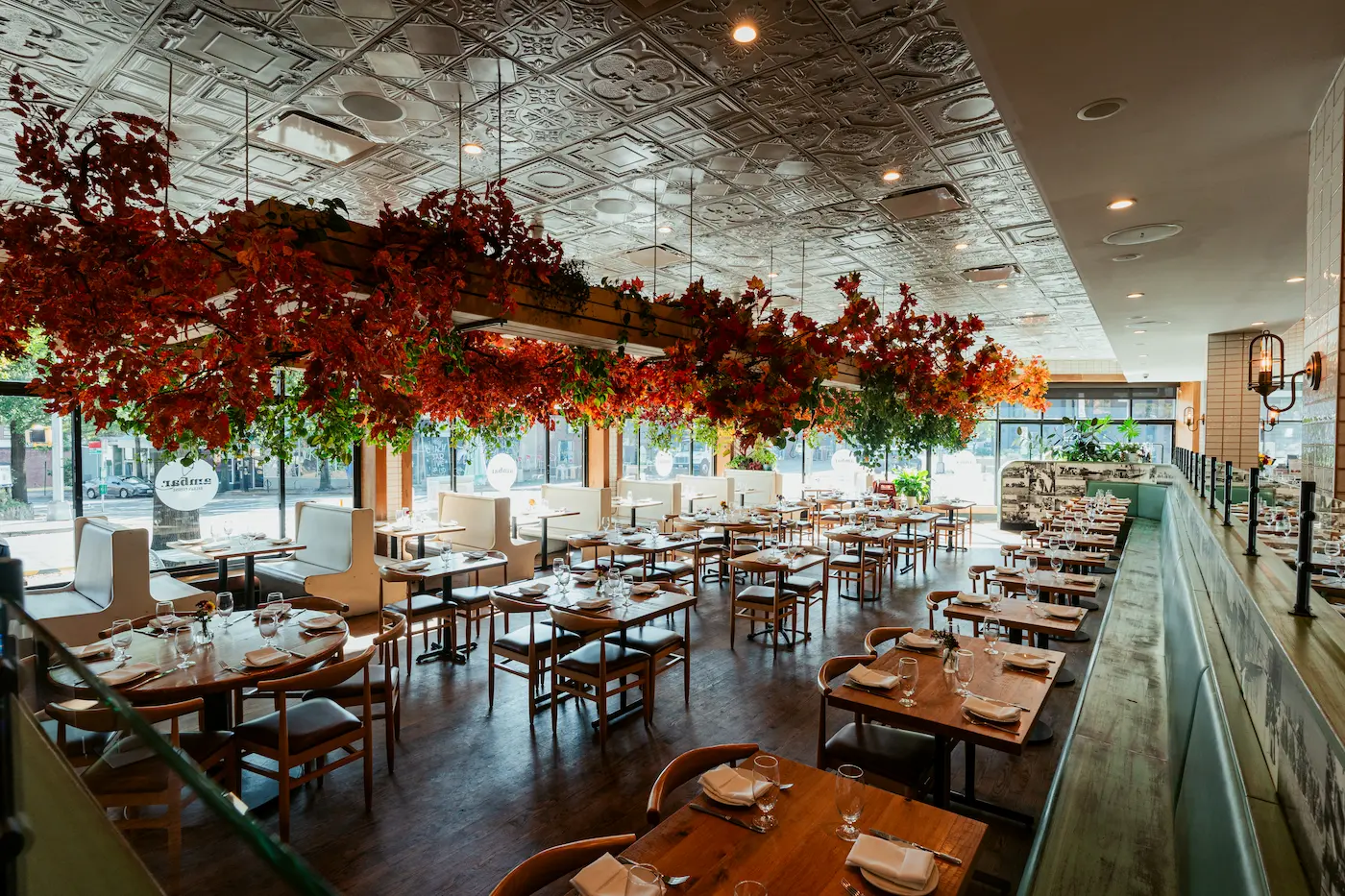
The Balkan Peninsula might seem an unlikely inspiration for a Northern Virginia restaurant, but Ambar Clarendon has made Serbian cuisine not just accessible but irresistible to American diners. The restaurant's vibrant atmosphere—complete with exposed brick, industrial fixtures, and a lively open kitchen—creates an energy that matches the bold flavors of the Balkans.
Chef Bojan Bocvarov's menu focuses on small plates designed for sharing, a format that encourages exploration of unfamiliar flavors and ingredients. The restaurant's signature dish, the slow-cooked lamb with kajmak (Serbian cream cheese) and roasted peppers, exemplifies the cuisine's emphasis on rich, comforting flavors and generous portions.
"Serbian food is about abundance and hospitality," Bocvarov explains while preparing his famous cevapcici, grilled meat rolls that have become a gateway dish for American diners unfamiliar with Balkan cuisine. "We don't just feed people—we embrace them." This philosophy extends to the restaurant's service style, where servers act as cultural ambassadors, explaining dishes and sharing stories about Serbian food traditions.
The restaurant's success has surprised even its owners, who initially worried that Northern Virginia might not be ready for such adventurous cuisine. Instead, they've found an enthusiastic audience among the region's diverse international population and adventurous American diners eager to explore new flavors.
Tuscarora Mill
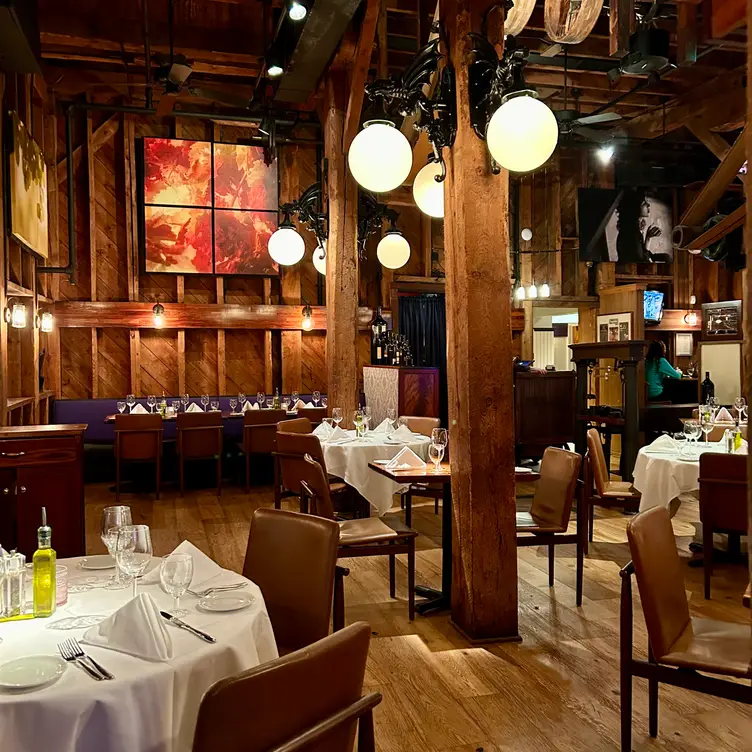
In the heart of Leesburg's historic district, Tuscarora Mill occupies a beautifully restored 1899 grain mill that has been serving the community for over four decades. The restaurant's three-level dining spaces, with their exposed stone walls and a working waterwheel, create an atmosphere that celebrates both history and hospitality.
The menu at "Tuskie's," as locals affectionately call it, reflects classic American cuisine with contemporary touches. Executive chef Mark Hernandez has maintained the restaurant's reputation for dishes like the famous peanut soup and rack of lamb while adding seasonal specials that showcase local ingredients. The restaurant's Sunday brunch has become a regional institution, drawing families from across Northern Virginia.
"We're not trying to be the most innovative restaurant in the area," Hernandez acknowledges while checking the preparation of his signature crab cakes. "We're trying to be the most reliable, the place where people can count on having a great meal in a beautiful setting." This consistency has earned the restaurant a devoted following among locals who appreciate having a special-occasion restaurant that feels like part of the community.
The mill's historic setting provides a connection to the area's agricultural past, while the menu's evolution reflects Northern Virginia's growing sophistication. It's a restaurant that honors tradition while embracing progress—much like the region itself.
Planning Your Pilgrimage
Getting There: Most restaurants are 30-60 minutes from D.C. depending on traffic. Route 50 west offers scenic drives to Middleburg area restaurants, while I-66 provides faster access to Falls Church and Fairfax locations. GPS is essential for rural venues like Patowmack Farm.
Reservations: Book L'Auberge Chez François and Patowmack Farm 2-3 weeks ahead for weekend dinners. 2941 and Clarity require 1-2 weeks notice. Bistro L'Hermitage and Ambar accept walk-ins but calling ahead is recommended. Tuscarora Mill takes reservations up to 30 days in advance.
Dress Codes: L'Auberge Chez François and 2941 encourage business casual to dressy attire. Patowmack Farm welcomes smart casual (think "country club meets farmers market"). Ambar and Clarity are casually elegant. Bistro L'Hermitage and Tuscarora Mill are relaxed but neat.
Signature Pairings:
-
Patowmack Farm: Tasting menu with wine pairings featuring Virginia vintages
-
2941: Duck breast with a glass of Pinot Noir from the extensive wine list
-
L'Auberge: Coq au vin with French Burgundy
-
Bistro L'Hermitage: Rabbit confit with Loire Valley Sancerre
-
Clarity: Octopus with natural orange wine
-
Ambar: Lamb with Serbian Prokupac wine
-
Tuscarora Mill: Crab cakes with Virginia Viognier
A Culinary Mosaic
The drive home from any of these restaurants offers time to reflect on what makes Northern Virginia's dining scene so compelling. It's not just the quality of individual restaurants—it's the way they collectively tell the story of a region in transition. The French restaurants represent the area's historical connection to European sophistication, while newer establishments like Clarity and Ambar reflect the international perspective of the region's diverse population.
This culinary landscape mirrors Northern Virginia's broader evolution from rural backwater to cosmopolitan corridor. Just as the region has attracted residents from around the world, drawn by opportunities in technology, government, and international business, its restaurants reflect this global perspective while maintaining strong connections to local traditions and ingredients.
The success of these seven restaurants suggests that Northern Virginia has reached a culinary maturity that rivals any major American city. Diners no longer need to travel to Washington or New York for memorable meals—they can find world-class cuisine in converted farmhouses, historic mills, and modern shopping districts throughout the region.
Perhaps most importantly, these restaurants demonstrate that great dining doesn't require a single aesthetic or philosophy. Excellence can be found in the radical seasonality of Patowmack Farm, the timeless elegance of L'Auberge Chez François, the global perspective of Ambar, or the historic charm of Tuscarora Mill. Like the region itself, Northern Virginia's culinary scene draws strength from its diversity, creating a dining landscape that offers something extraordinary for every palate and occasion.
The next time you find yourself driving through Northern Virginia's rolling hills and bustling suburbs, remember that you're not just passing through a suburban corridor—you're traversing one of America's most exciting culinary regions, where every meal has the potential to become a destination.
Your Table Awaits in Northern Virginia
From the vineyards of Lovettsville to the vibrant streets of Clarendon, Northern Virginia’s dining scene invites you to taste the soul of a region in transformation. Whether you're planning a romantic escape, a foodie weekend, or just want to explore what makes this area so unique—now is the time to make your reservation.
Want more insider restaurant guides and hidden gems?
Join the Real Nova Network newsletter for curated food and lifestyle content delivered weekly.
Falling in love with the region?
Let Chris Colgan and The Colgan Team help you call Northern Virginia home. We know the neighborhoods, the hidden dining spots, and the lifestyle that makes this region special. Explore homes and schedule a consultation at www.colganteam.com.
Follow @ChrisColganTeam on Instagram for dining recs, community highlights, and real estate insights from someone who lives—and eats—right here.

Leave A Comment